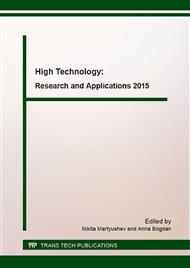p.153
p.158
p.162
p.167
p.172
p.177
p.181
p.186
p.191
Boundary Element Formulation for Numerical Surface Wave Modelling in Poroviscoelastisity
Abstract:
Problems of the poroviscodynamics are considered. Theory of poroviscoelasticity is based on Biot’s equations of fluid saturated porous media under assumption that the skeleton is viscoelastic. Viscoelastic effects of solid skeleton are modeled by mean of elastic-viscoelastic correspondence principle, using such viscoelastic models as a standard linear solid model and model with weakly singular kernel. The fluid is taken as original in Biot’s formulation without viscoelastic effects. Boundary integral equations method is applied to solve three-dimensional boundary-value problems. Boundary-element method with mixed discretization and matched approximation of boundary functions is used. Solution is obtained in Laplace domain, and then Durbin’s algorithm of numerical inversion of Laplace transform is applied to perform solution in time domain. An influence of viscoelastic parameters on dynamic responses is studied. Numerical example of the surface waves modelling is considered.
Info:
Periodical:
Pages:
172-176
Citation:
Online since:
February 2016
Authors:
Price:
Сopyright:
© 2016 Trans Tech Publications Ltd. All Rights Reserved
Share:
Citation:


